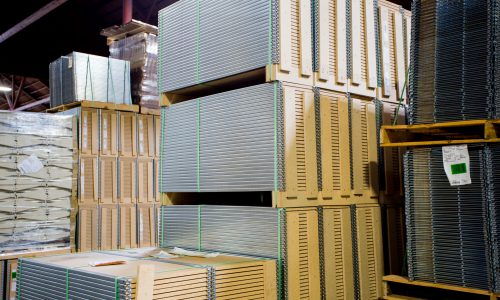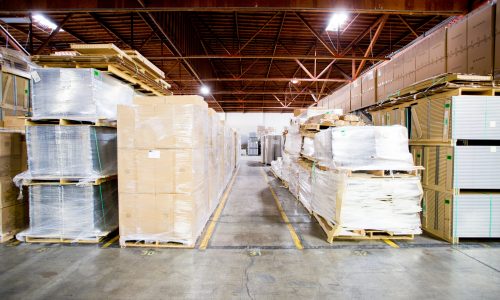Three Lesser-Known Parts of the Logistics Supply Chain

Dzmitry Samusevich
VP/COO
Did you know that behind the scenes of every online purchase, there’s a complex web of logistics and warehousing operations working tirelessly to get your order to your doorstep?
While we often focus on the big players in the logistics supply chain, three lesser-known parts are crucial in ensuring smooth operations.
From efficient inventory management to the intricacies of reverse logistics and the final leg of delivery known as last-mile logistics, each component is vital for businesses to thrive in the modern world of e-commerce. This article will delve into these lesser-known parts and shed light on their significance in the logistics supply chain.

1. Warehousing & Inventory Management
Warehouse and inventory management are crucial components of the logistics supply chain that often go unnoticed. Efficient warehousing practices and inventory control play a vital role in ensuring the smooth flow of goods from production to distribution.
The continuous flow, fast chain, and flexible models are the three main supply chain management models that warehouse owners and logistics professionals utilize to enhance operations and meet customer demands.
Regarding warehousing, the focus is optimizing space, maximizing efficiency, and maintaining inventory accuracy. By strategically organizing and categorizing products, warehouses can minimize the time spent searching for items and improve order fulfillment speed.
Additionally, implementing technologies like barcode and RFID systems allows for real-time inventory tracking- reducing the risk of stockouts and overstocks.
Inventory management is a delicate balancing act. It involves forecasting demand, coordinating with suppliers, and optimizing order quantities to prevent excess inventory or stock shortages.
Inventory control measures can help prioritize high-demand items, maximizing efficiency and reducing storage costs. Efficient warehousing and inventory management streamline operations and contribute to customer satisfaction. With well-organized warehouses and accurate inventory management, businesses can ensure prompt order fulfillment, minimize errors, and meet customer expectations.
2. Reverse Logistics
Although lesser known, reverse logistics plays a vital role in the logistics supply chain. It involves managing the flow of goods from the customer to the retailer or manufacturer. This includes product returns, recalls, repairs, and disposal. Here are some key points to consider about reverse logistics:
Challenges in Managing Reverse Logistics
Reverse logistics can be complex and challenging due to customer expectations, the condition of returned goods, and compliance with regulations. Efficiently handling and processing returns, coordinating with suppliers, and minimizing costs are significant challenges.
Benefits of Effective Reverse Logistics
Implementing efficient reverse logistics processes can bring several benefits. Businesses with effective reverse logistics can reduce costs by refurbishing and reselling returned goods. It can also enhance customer satisfaction by streamlining the return process and providing prompt resolutions.
Collaboration & Partnerships
Successful reverse logistics often require collaboration among manufacturers, retailers, and transportation providers. Effective communication and partnerships help streamline the return process and ensure a seamless flow of goods.
3. Last-Mile Delivery
Last-mile delivery, the final leg of the logistics supply chain, plays a crucial role in customer satisfaction. Often underestimated, this stage involves transporting goods from the distribution center to the end consumer. Here are some critical insights into last-mile delivery that are often overlooked:
Customer Expectations
In today’s fast-paced world, customers expect efficient and timely delivery of their orders. A seamless last-mile delivery experience is essential for customer satisfaction and can be a competitive advantage for businesses.
Challenges
Last-mile logistics are complex due to various factors- such as traffic congestion, multiple stops, and time-sensitive deliveries. Addressing these challenges requires careful planning and innovative solutions.

Innovation in Delivery Methods
To overcome obstacles, companies are adopting innovative approaches- such as using drones or autonomous vehicles, implementing crowd shipping, and utilizing intelligent lockers. These technologies aim to streamline the delivery process and provide customers with more convenient options.
Sustainability
Last-mile delivery is often associated with high carbon emissions and environmental impact. To address this concern, companies are exploring eco-friendly alternatives like electric vehicles, bike couriers, and consolidation hubs to optimize delivery routes and reduce their carbon footprint.
Collaboration & Partnerships
Building strong partnerships with local couriers, utilizing third-party logistics providers, or integrating with local delivery networks can enhance the efficiency and reach of last-mile delivery.
Say Hello to FDR Warehouse in Stockton, CA
Regarding the lesser-known parts of the logistics supply chain, FDR Warehouse in Stockton, CA, stands out as a reliable and efficient solution. With our 24/7 customer service, flexible solutions, and conveniently located facilities, we offer peace of mind for businesses needing commercial storage and logistics services.
Situated close to major railways, highways, and ports, including the Union Pacific and BNSF railways, I-5, Highway 99, and Port of Oakland and Port of Stockton, FDR Warehouse ensures that your goods can be easily transported anywhere in the Continental USA.
Request a quote at (209) 780-5042 or schedule a time on our calendar to experience our top-notch warehousing and logistics services.